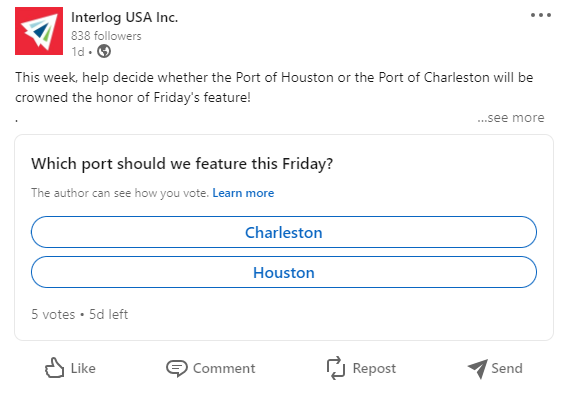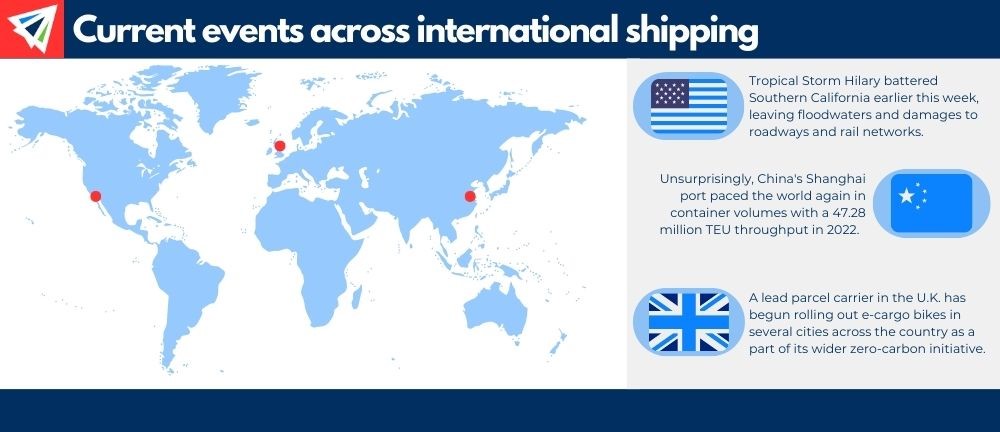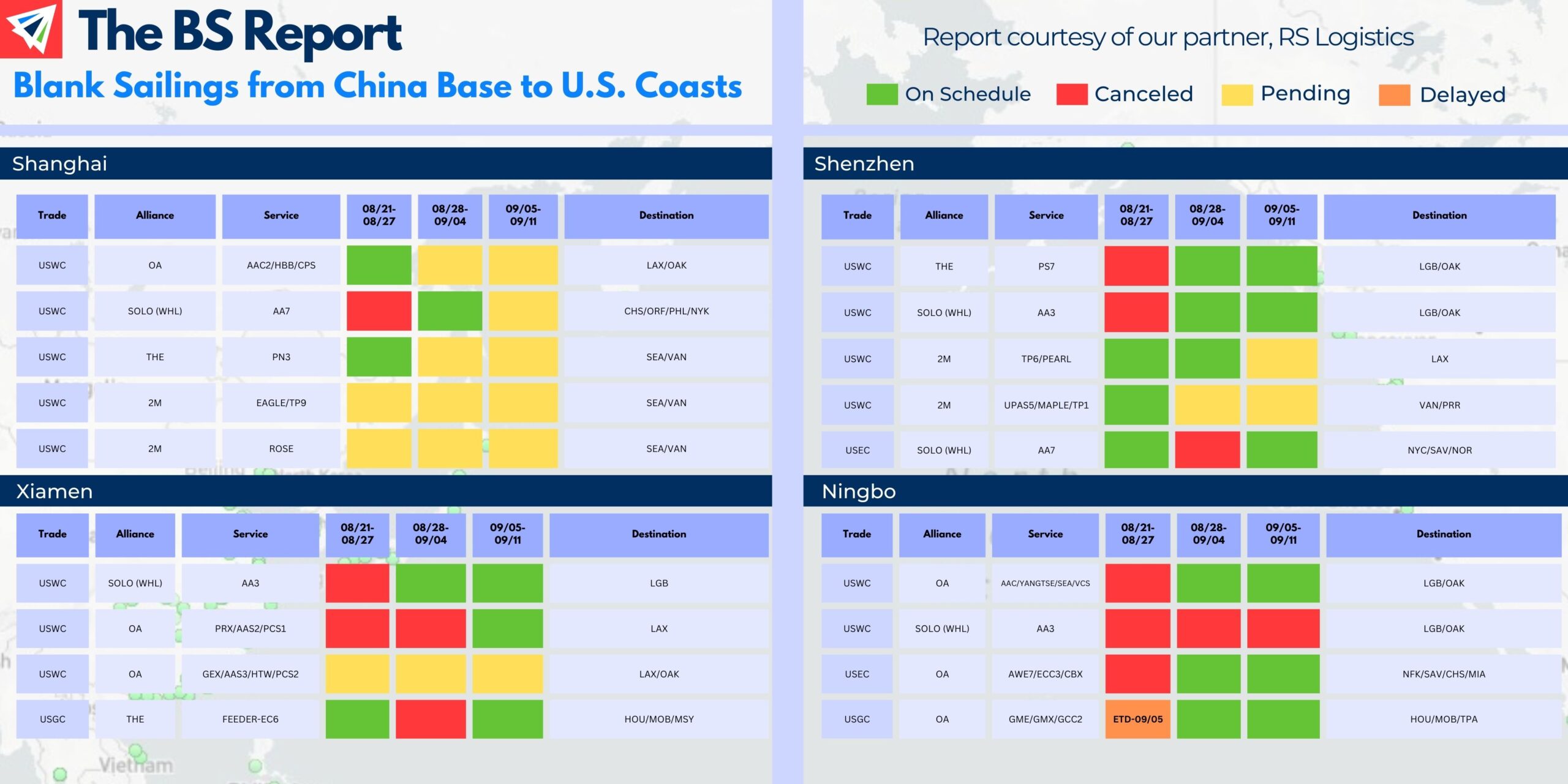
Check Out Our LinkedIn Poll!
Every other week we post a poll on our LinkedIn page (give us a follow if you feel so inclined 
Vote on this week’s port poll battle: Port of Charleston vs. Port of Houston
Also – consider subscribing to our biweekly “Port of the Week!” newsletter to continue getting a closer look at various ports (and inland ports), globally and domestically.
 Freight FM
Freight FM Interlog Insights
Interlog Insights Coffee & Cargo
Coffee & Cargo




